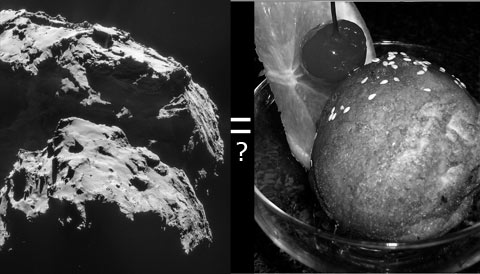
Supernova, Two Ways
Two new studies confirm that the white dwarfs that explode as Type Ia supernovae can approach death in two different ways.

Runaway Compact Galaxies?
Astronomers have discovered 195 compact elliptical galaxies, upping the known number of these weird galaxies sixfold.

Ancient Galaxies Seen Dying Inside-Out
Astronomers have found massive galaxies 3 billion years after the Big Bang that are dying from the inside out.

Dawn Maps Ceres in False Color
Thanks to NASA’s Dawn spacecraft, we’re finally seeing more of the asteroid Ceres than a fuzzy ball.

Dragons and Venus Arise to Fool
On April 1st astronomers and other important folk got serious about science jokes in an annual tradition of scientific tomfoolery.

MAVEN Spots Dust Cloud, Aurora on Mars
NASA’s MAVEN spacecraft has detected dust high in Mars’s atmosphere and auroras across the planet’s northern hemisphere.

Ripples in the Milky Way
Astronomers have detected what look like four undulations in the Milky Way Galaxy’s disk. If the structures are all part of the disk, our galaxy is more than half again as large as we thought it was.

Magnetosphere Mission Launches
With the goal of better understanding Earth’s space weather environment, NASA’s Magnetospheric Multiscale (MMS) mission launched just over an hour before midnight on March 12th from Cape Canaveral.

Dusty Galaxy in the Early Universe
A small galaxy 700 million years after the universe’s birth has a dust reservoir that makes it look like a much older galaxy.

Monster Black Hole in Early Universe
Astronomers have discovered one of the brightest quasars in the early universe. The source, SDSS J010013.02+280225.8 (hereafter J0100+2802), is powered by a supermassive black hole at a redshift of 6.3, meaning that its light left it 12.8 billion years ago.

Deep Fried Comet Ice
Scientists studying ice here on Earth think they’ve confirmed why comets have hard crusts covered in hydrocarbon gunk.

Pluto and Charon’s Gravitational Dance
This image series, taken by NASA’s New Horizons spacecraft in late January 2015, reveals the dwarf planet Pluto and its largest moon, Charon, orbiting their common center of mass.

Planck Upholds Standard Cosmology
The Planck team has finally released its full-mission data, revealing a remarkably detailed view of our universe and our galaxy.

Cosmic Inflation Signal Just Dust
The long-awaited analysis of spiraling polarization patterns called B-modes affirms that these signals, purportedly from the universe’s post-birth inflation, are probably from dust in our galaxy instead.

Ancient Five-Planet System Found
Astronomers have potentially confirmed a five-planet exoplanet system around an 11-billion-year-old star in our galaxy.

Black Hole Binary En Route to Merger?
Astronomers poring through two decades of archival and survey observations have discovered what looks like a pair of supermassive black holes closing in for a merger.

New Look at Eagle Nebula
The Hubble Space Telescope is commemorating its 25th anniversary with a second look at the Pillars of Creation — but there’s hard science behind these pretty pictures.

Curiosity Studies Mars Dry-out
Samples taken from two drill holes on Mars support the idea that Mars lost a whole lot of water fairly early in its history.

Curiosity Finds Methane, Other Organics
NASA’s Curiosity rover has detected both methane in Mars’s atmosphere and carbon-bearing organic compounds in its rocks. But it’s unclear where these molecules come from — or whether there’s any biological connection.

MAVEN Finds New Particles, Ion Plume
NASA’s MAVEN mission has discovered a new population of particles in Mars’s upper atmosphere. It’s also found a plume of particles escaping from the planet’s poles, confirming atmospheric loss is happening today.
